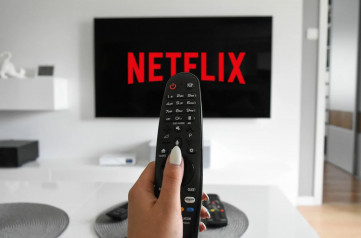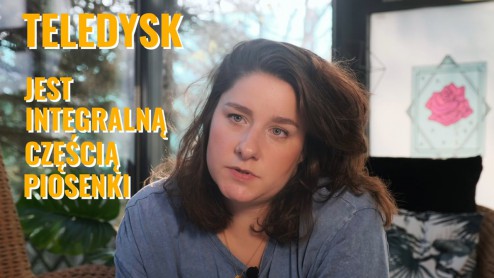Mick Champayne | Home is where the everything is13.11.2020
The outbreak of COVID-19 has centered our lives squarely around our homes. With stay-at-home orders and remote work/schooling, it’s where everything happens now. As the boundaries have blurred, we’re all reexamining our priorities for our homes. We have a greater desire for integrating the natural world into our lives, for creating spaces that complement our new routines, and reflecting our new values. What is the new definition for making a house a home?
I lasted all of six weeks before I finally decided I’d had enough. In an era of the rent is too damn high, I’d prided myself on finding a gem of an apartment in a great neighborhood with a rent that made my friends' mouths drop. I wore the badge of cheap rent proudly, and even though the place was what realtors would call cozy, I rationalized it with the fact that I spent 90% of my time away from home: I was either at work, meeting up for coffee, visiting with friends, traveling—anywhere but home. But as the world was put on house arrest, my cozy little apartment’s facade started to crack, making me feel entirely claustrophobic.
It is a weird thing to tell people you bought a house in a pandemic when so many things are uncertain, but hey, that’s what I did. Like many others, I outgrew my space seemingly overnight. I am fortunate enough that my job was able to transition to being fully remote, but the makeshift office I made was a ticking time bomb. With the impending summer, no A.C. and western-facing windows were going to make the space Dante’s Inferno with no place to hide. And with no place to hide, the boundaries between work and home would blur completely.
With stay-at-home orders and remote work and schooling, home has abruptly become the focal point of our lives. According to the IKEA 2020 Life At Home Report, “78% of us agree that home is our sanctuary during the 2020 pandemic restrictions. As a result, two in five of us have made changes to our home.” With new priorities emerging everywhere and all at once, our criteria of what makes a house a home has fundamentally changed.
Location, location, location
Pre-COVID, people often chose to buy or rent a place based on its location, factoring in access to good schools, an easy commute to work, or nearby public transport. But in a pandemic, all of that is kind of a moot point. On one hand, you have people who are completely embracing the idea of a life untethered. While I only moved half a mile down the street, some have decided to pack all of their lives into storage, taking the (hopefully) once-in-a-lifetime opportunity to embrace the nomadic lifestyle and see their country. On the other hand, a staggering amount of people’s circumstances have changed beyond their control—in the ballpark of 195 million full-time workers losing their jobs globally. The draw of the big city, which used to attract people away from their families with promises of better employment and education, now sees people moving back closer to them to help support each other for things like child and elderly care.
Accommodating accommodations
But if you decide to stay put—or at least in a conventional “home” setting—there has been a significant shift for many of us in how we use our homes. IKEA has done extensive primary research over the past seven years, exploring trends likely to affect the way we live in the next decade, and have noticed the rise in the multipurpose home. In 2020, their forecasts became a reality as many of us now experience a more fluid way of life at home since our homes have quickly transformed into offices, schools, gyms, playgrounds and social spaces.
With whole families living on top of one another, comfort and privacy are at a premium. For the work-from-home crowd, many of the environmental considerations associated with workplace productivity—such as temperature, indoor air quality, noise pollution, and visual comfort (like lighting design)—have translated into at-home requirements. For kids, research shows a comfortable, private space to study away helps boost focus, minimize stress, and nurture learning.
Communal areas and maker spaces have become vital to satisfy our emotional needs.
When it comes to a brain break, now that the novelty of zoom parties and sourdough bread baking has worn off, the home needs to flex and adapt. In the pandemic, activities like exercising at home, crafting, gaming, and gardening give people a reprieve from their daily responsibilities, so communal areas and maker spaces have become vital to satisfy our emotional needs.
Call me Plant Daddy
Speaking of satisfying emotional needs, access to nature, greenery and green spaces has become a top priority for a sustainable and balanced life. When I chose to stay in the city (versus, say, moving to a cabin in the woods), a big requirement was proximity to parks. Thinking of my future-self trying to find ways to escape during a lockdown winter, I got lucky finding a place smackdab in the middle of two big beautiful ones.
The benefits of houseplants are numerous, both environmentally and aesthetically: to bring the outdoors in, beautify a space, purify the air, grow your own food, satisfy a human desire to take care of something, or simply to distract you from what’s going on in the world.
A much more curious phenomenon of the pandemic has been the explosion of houseplant sales, and consequently, Plant Moms and Dads. Patch, an online indoor plant retailer, saw a 500% increase in sales during quarantine, and in my own purely unscientific study, I’ve noticed a lot more proud plant parents in my circles and on my social media. One coworker of mine boasts over 55 plants in his apartment (with plans to buy more), and I swoon over the @boyswithplants feed. The benefits of houseplants are numerous, both environmentally and aesthetically: to bring the outdoors in, beautify a space, purify the air, grow your own food, satisfy a human desire to take care of something, or simply to distract you from what’s going on in the world.
The outsides match the insides
One of my friend’s new quarantine routines includes ample amounts of “blob time”. As work and home boundaries have blurred, she defines this as a dedicated day to detach from her screens and separate herself mentally from work, and just be a blob on the couch. And blob is a fitting word that’s reflecting what’s happening in home decor.
The experience of lockdown will no doubt have a lasting effect on us all. And many will be rethinking the kind of life they want to live.
Now that we’re spending 24/7 at home, the trend of highly curated, unrealistic Kinfolk and minimalistic aesthetics are changing in favor of more lived-in, colorful places where you'd actually want to spend time. Vice reporter Bettina Makalintal says, “We need levity anywhere we can get it right now, and as a result, we want homes that look playful, personal, and generally more visually interesting—and wiggly lines and colorful, freeform blobs are just about as different from bare white walls as you can get.”
If you move house in a pandemic and no one comes to see it…
Did it really happen? Home is where everything happens now, except for the passing of time. Until there’s a vaccine, we don’t know how long our lockdowns will last. Bound to our four walls, our days blend together and our boundaries blur, warping our sense of time. We used to mark the passing of time with events and celebrations, like housewarming parties and holidays, but time is one sense no amount of home-improvement can seem to fix. Even travel gave us a lens to experience time in the context of home: the longer we’re away from it, the more we long for it.
While I hesitate to say there will be a “new normal” in regards to homelife post-pandemic, the experience of lockdown will no doubt have a lasting effect on us all. And many will be rethinking the kind of life they want to live and how they define a house as a home.
see also
- Netflix Users Launch Petition in Defense of End Credits

News
Netflix Users Launch Petition in Defense of End Credits
- Bruno Althamer | This was to be a clash of the titans

Opinions
Bruno Althamer | This was to be a clash of the titans
- Geomagnetic Storm May Cost SpaceX 50 Starlink Satellites

News
Geomagnetic Storm May Cost SpaceX 50 Starlink Satellites
- Medicine, Food, Poison. The Marvelous World of Fungi Explored in Upcoming Documentary
News
Medicine, Food, Poison. The Marvelous World of Fungi Explored in Upcoming Documentary
discover playlists
-
Papaya Young Directors 7 #MASTERTALKS
 18
18Papaya Young Directors 7 #MASTERTALKS
-
Instagram Stories PYD 2020
 02
02Instagram Stories PYD 2020
-
Nowe utwory z pierwszej 10 Billboard Hot 100 (II kwartał 2019 r.)
 15
15Nowe utwory z pierwszej 10 Billboard Hot 100 (II kwartał 2019 r.)
-
 03
03
